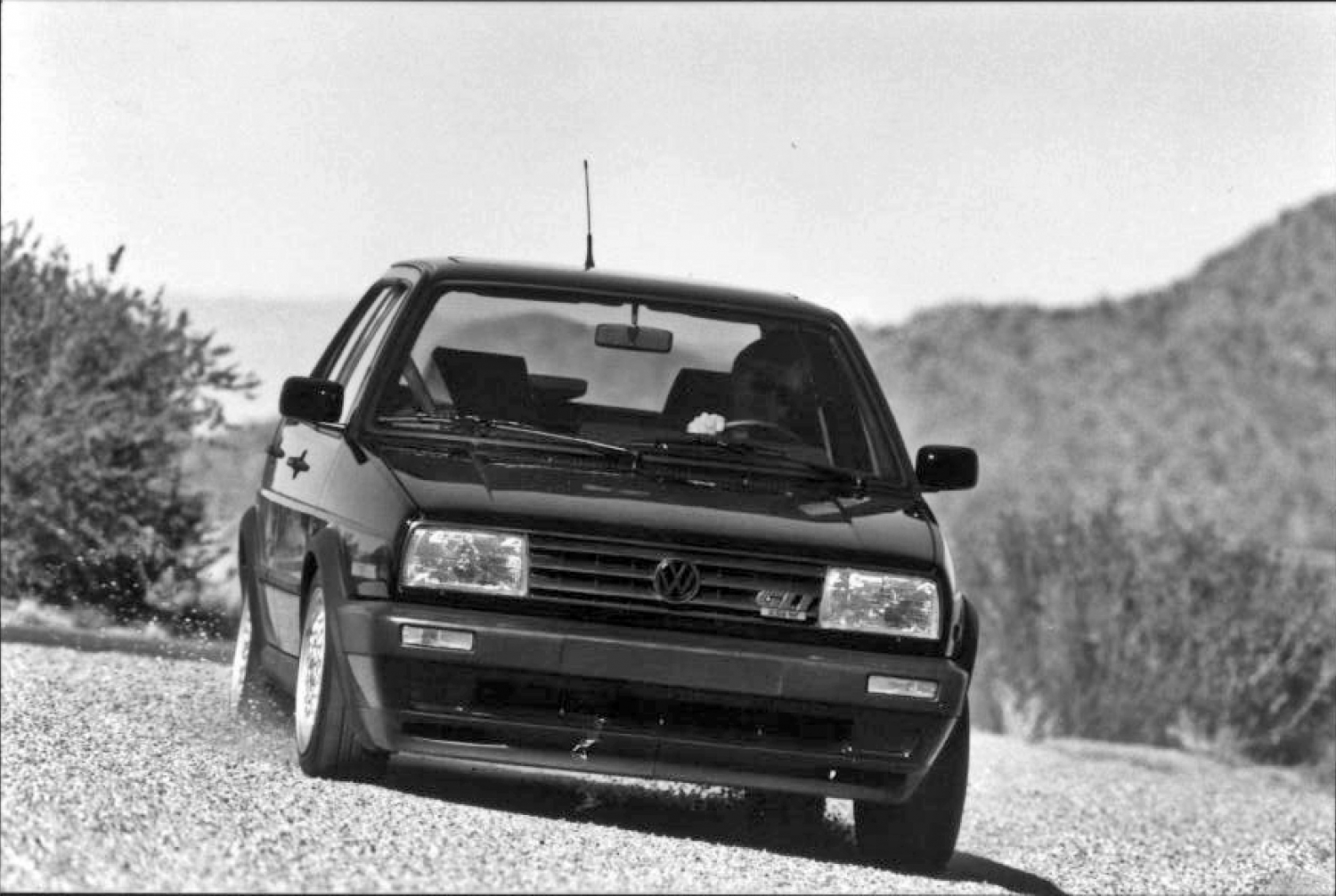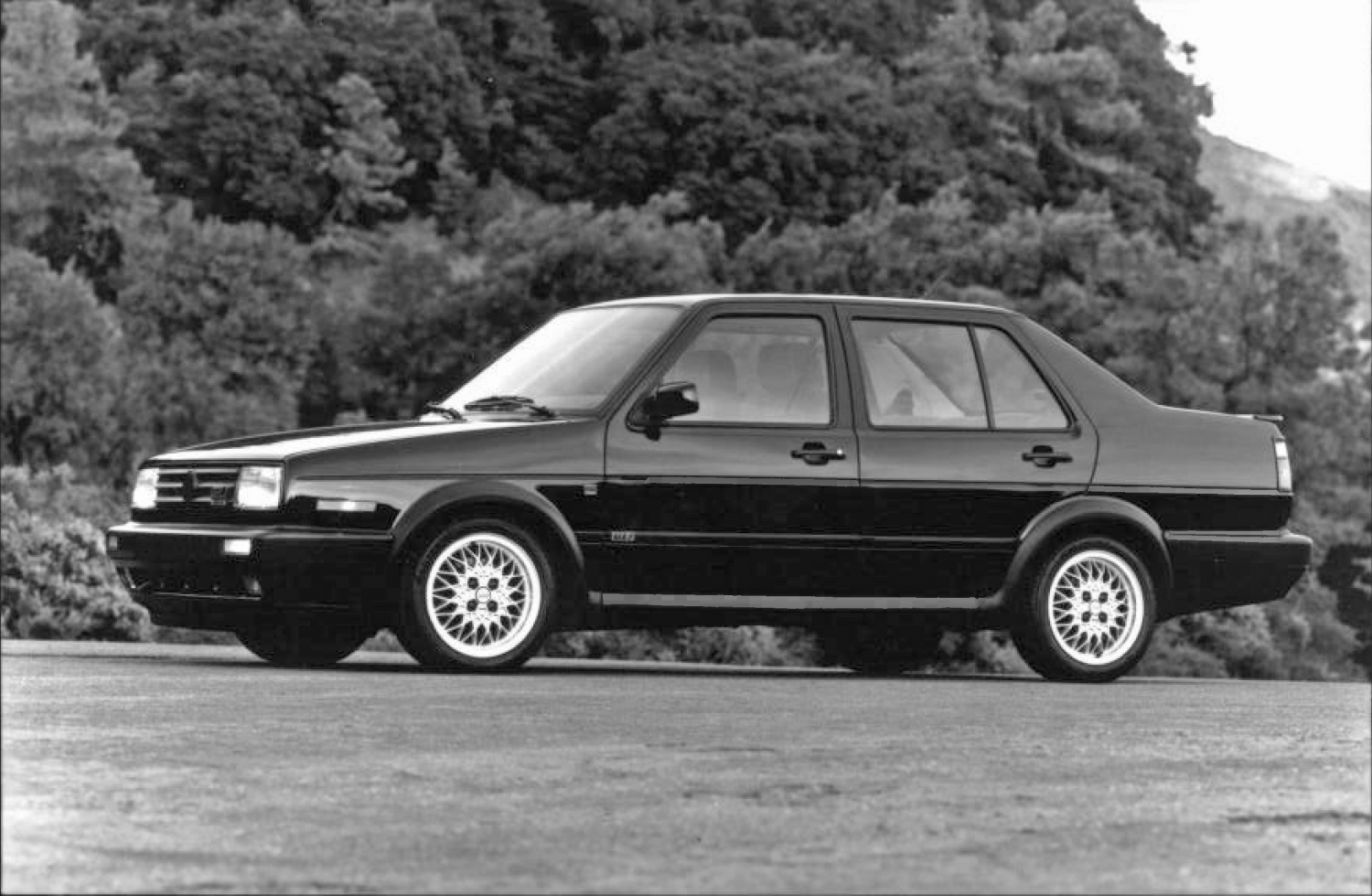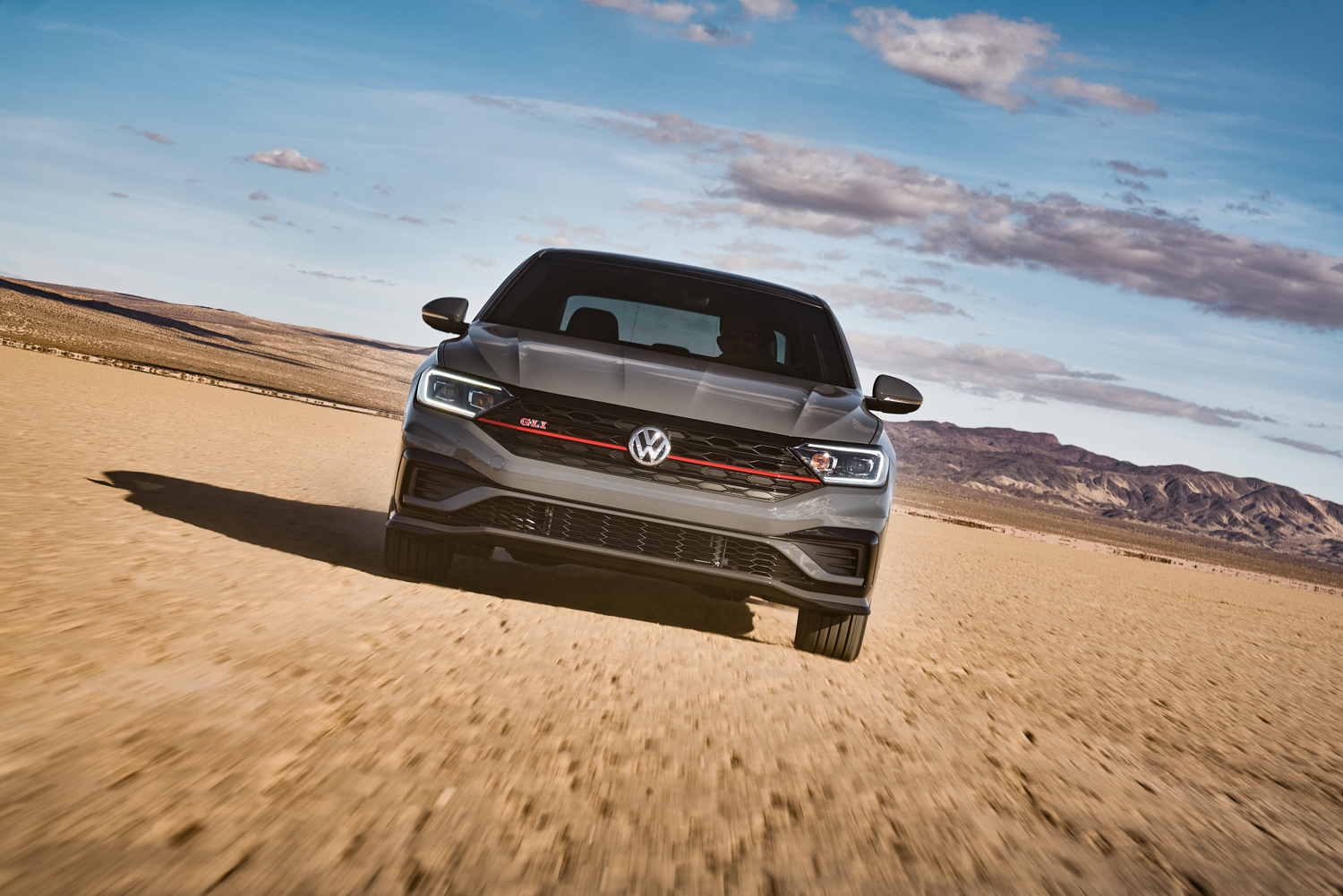After years of second billing, is the Jetta GLI ready for its closeup?
The VW enthusiast community is rife with insignificant polarities, from heated arguments over the proper number of windows for a Bus to agonized laments regarding the overextended lifespan of that infamous “2.slow” four-cylinder engine. Few topics, however, can raise the temperature in a VW chatroom like the mere existence of the Jetta, particularly in recent years. Hugely popular with buyers, the little sedan has always been a target of derision among hardcore VW fans; why add the weight, space, and aesthetic disaster of a trunk to a car (the Golf) which has always been perfectly adequate in and of itself?
The irony here is that it is not uncommon for Jetta owners to love their cars so much that they become rabid VW fans, at which point they scorn the model for being less “European” than the Golf. I’m personally familiar with this phenomenon. My first car was a 1992 VW Jetta GL; my second, a 1991 VW Golf GTI. I was a freelance contributing editor and forum administrator on the world’s biggest VW fan site at the time; mere ownership of that GTI opened the door to a way of life I’d otherwise never have imagined.
When it introduced the all-new, defiantly-upmarket 2019 Jetta GLI, VW said that “multiple generations of the Jetta GLI have delivered an affordable, family-friendly package to automotive enthusiasts.” That’s fair enough, but what goes unsaid is that the GLI has always played second fiddle to its tartan-plaid-seated hatchback sibling. Consider that VW now markets the GTI separate from the Golf, while the GLI is still but a trim level of the Jetta. In announcing the new GLI, the brand described key elements as “shared with the GTI” or “borrowed from the Golf R.” Yet the GLI has survived, despite second billing, for 35 years, which means it’s worth taking a look back.


The first-generation GLI is a rare bird, since it was introduced in 1984, in the final year of production for the first-generation Golf/Jetta. While the Golf and GTI were sowing the seeds of a strong enthusiast base, the Jetta was barely a ripple on consumers’ radar. Nevertheless, that car featured a fuel-injected 1.8-liter engine worked up with lighter pistons and a higher compression ratio than the base model, good for 90 horsepower (plenty for the time). A five-speed manual and sport suspension completed the package.
Best of luck to those shopping for an early GLI or GTI. Both are uncommon, so it’s a “what the market will bear” kind of situation. Think about the merits and drawbacks of stock vs. modified (most likely, the acceptable level of modification), and wait until the right one comes along. These cars are fully deserving of collector status and priced as such. It’s worth noting that the 1984 Jetta GLI was made in Germany while the Rabbit GTI was built in Westmoreland, Pennsylvania; do you want the car that looks European, or the one that is European?
The 1989 Helios Edition GLI was the shining star of the second generation, with an exclusive Helios Blue exterior finish, color-coordinated BBS wheels, blue-striped Recaro seats, and a production run of just 1500 examples. The late ‘80s GLI was powered by a 1.8-liter 16-valve engine with distinctive performance benefits over the base Jetta. The 1990 GLI marked the appearance of the famed 2.0-liter 16-valve engine, also found in the GTI. This is another case in which book value has no place in the conversation.

There are fond memories of the third generation, 1993 to 1999, for one reason—the Jetta’s popularity largely kept Volkswagen of America from going under during that period. The GLI badge went on hiatus in favor of the Jetta GLX, powered by a 2.8-liter VR6 engine but otherwise unremarkable. Exclusive colors and special editions made the GTI much more relevant to the vibrant and outspoken enthusiast community.
In 2002, the GLI again got the 2.8-liter VR6 engine, and a mid-model year update brought the 2004.5 GLI, which featured GTI-esque styling and the option of a 1.8-liter turbocharged engine. Prices of GLIs and GTIs from this generation, which ran through 2005, are about even on the used marketplace, though there are a handful of sought-after special edition GTIs that distort average values.
The fifth-generation GLI, rolled out in 2006, featured a 2.0-liter turbocharged engine, good for 200 horsepower, and other upgrades such as an independent rear suspension and eye-catching 18-inch alloys. In 2007, VW introduced the Fahrenheit Edition, a limited GLI and GTI pair. The GLI wore sunny yellow, the GTI ripe orange, and both featured exclusive contrast-stitch upholstery and limited edition badging and numbering. Perhaps most interesting, the Fahrenheit GLI was available with a six-speed manual transmission, while Fahrenheit GTI buyers got only the DSG dual-clutch automatic. In other words, VW flaunted the stereotype that “hot hatch” drivers were more likely to drive stick.
With the sixth generation in 2011, the Golf was moved to a more advanced platform and the Jetta was left behind, looking and feeling like an afterthought. The 2015 Edition 30 GLI, a cursory attempt at commemorating the nameplate’s 30th birthday, was barely a blip on the radar, overshadowed by both the awesome Golf R and the uncertainty of the unfolding Dieselgate scandal. Since the Golf and Jetta aren’t directly comparable for this period, used car values reveal little about their market positioning. Furthermore, these years reinforced the notion that the GTI is a car worth seeking out and the GLI is just a Jetta with extra features.


As of 2018, the Jetta and Golf are rightfully back on the same platform. With the rollout of the 2019 GLI, VW emphasized that affordability always has been and remains a key value; while the idea of a sport sedan seems outdated, it’s also VW’s best effort yet. The new GLI shares the GTI’s 2.0-liter turbo engine, rated for 228 horsepower and 258 pound-feet of torque, with the option of a six-speed manual or seven-speed DSG automatic. Other upgrades include a sport suspension system, front brakes borrowed from the top-end Golf R, and a limited-slip differential. The GLI also gets a lower ride height, the better to emphasize exclusive wheel designs, and red accent trim as another nod to the GTI.
Which means that from the VW enthusiast’s perspective, we are right back to 1984, when the major difference between GTI and GLI is the presence of a trunk. Will this end the controversy about the GLI’s purity, relevance, or desirability? Don’t bet on it.

20190401175403)




